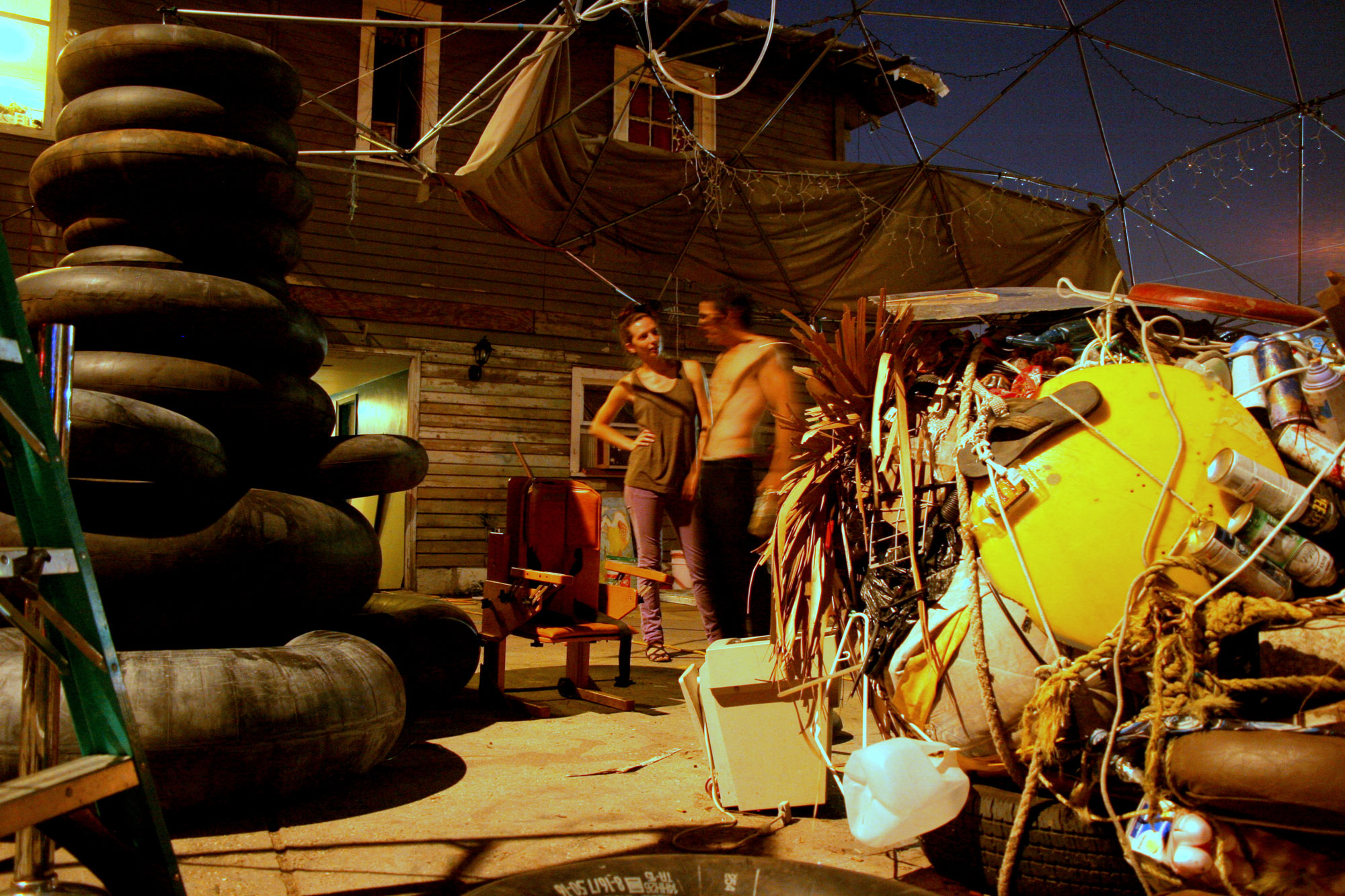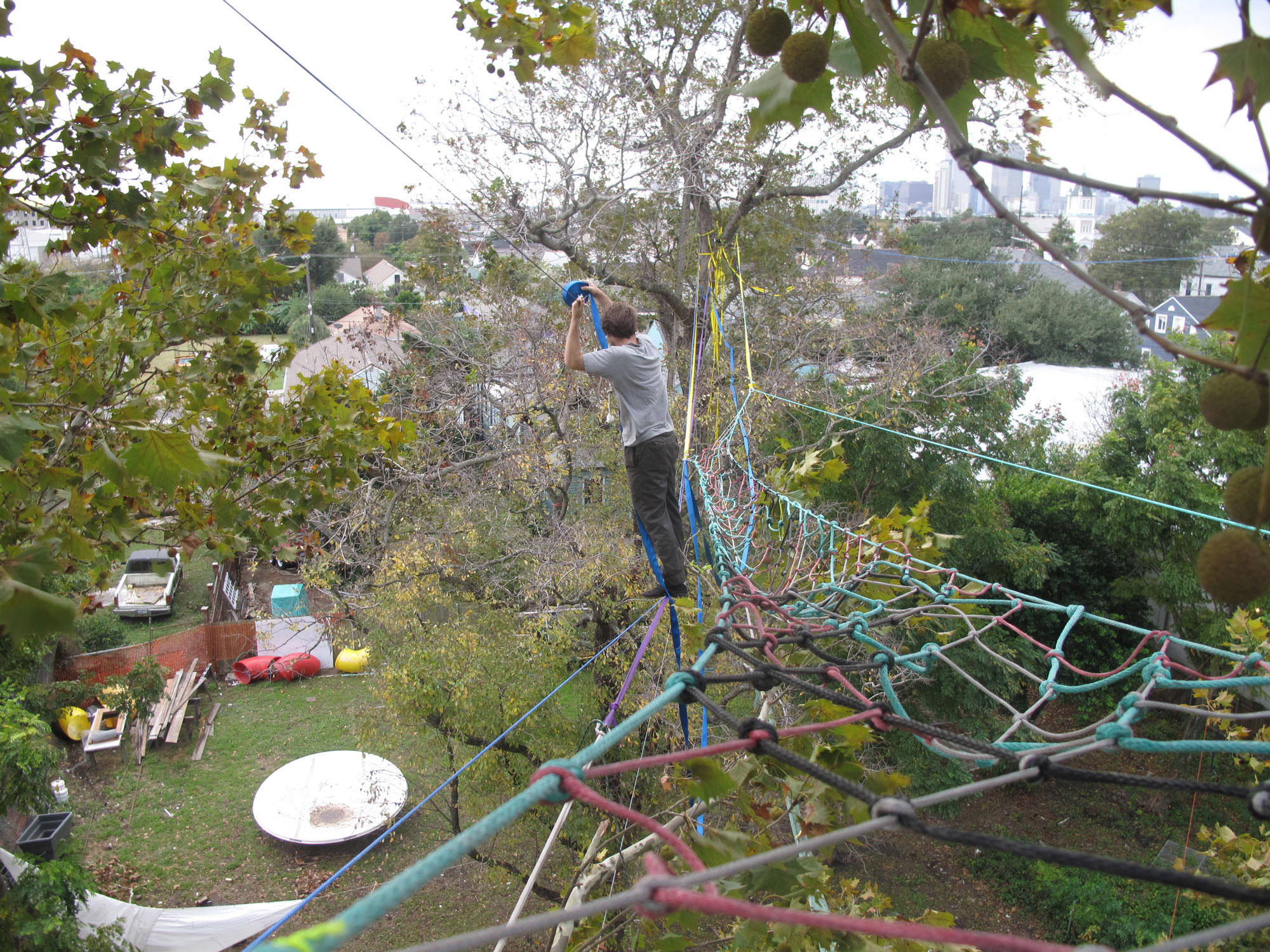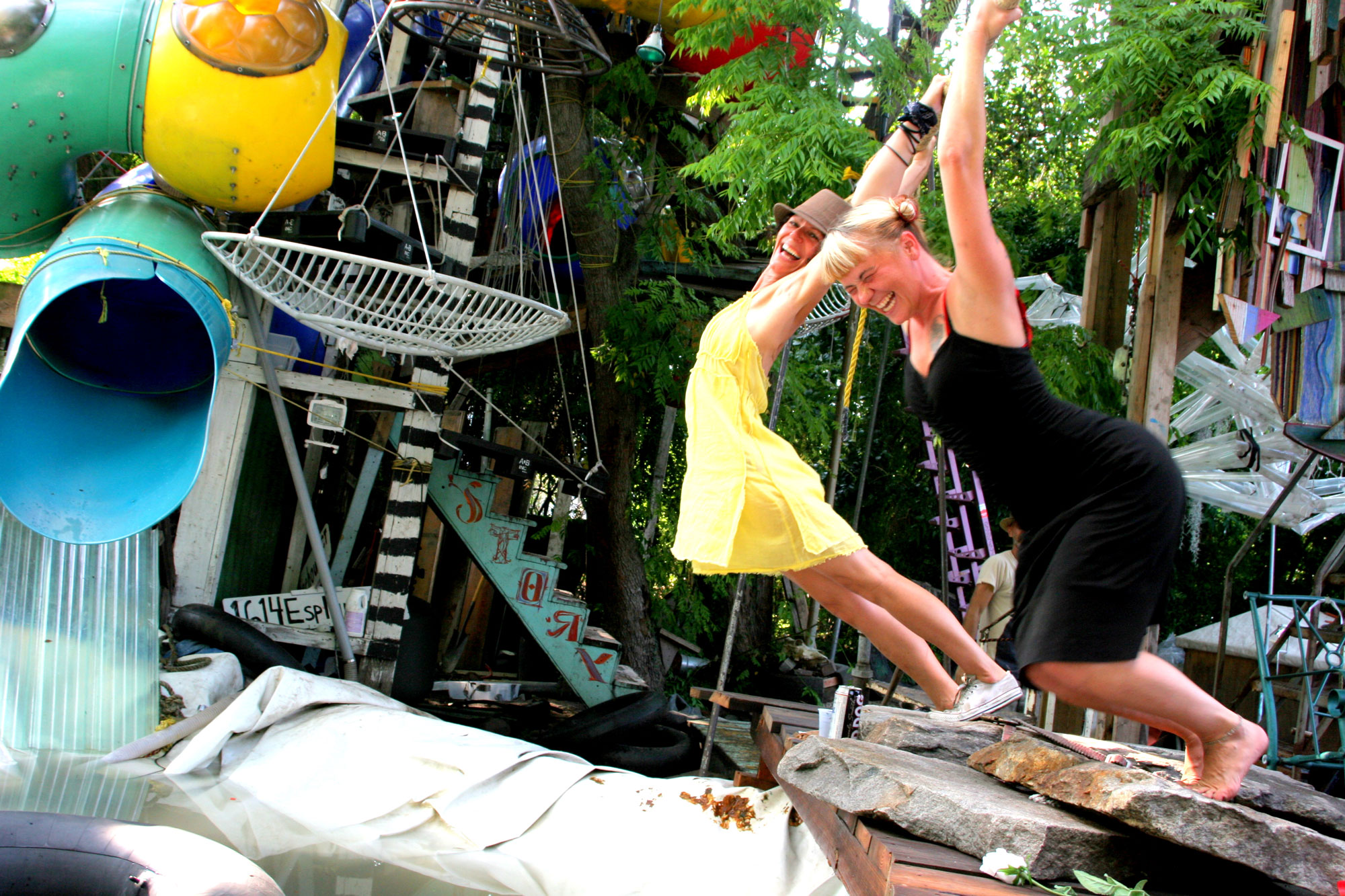The New Orleans Art House, 2005-2011
In an extract from his recent book on Architecture and Anarchism, published by London arts & architecture charity Antepavilion, Paul Dobraszczyk considers a house in New Orleans which used art as a site of post-disaster recovery, but was complicit in complicated relationships of racial and social dynamics in a city which has experienced artwashing in its passage of recovery..
Climate-related disasters are already affecting many cities
in the world, providing a terrifying foretaste of the future for many more.
Before the category five hurricane Katrina struck New Orleans in August 2005,
between 80 and 90 percent of the city's residents were evacuated; those that
remained were largely impoverished African-Americans who had no other option.
An enormous storm surge breached the network of levees and flood walls that
have traditionally defended the low-lying city from catastrophic flooding after
Katrina hit, 80 percent of New Orleans lay underwater, 1464 people died
(according to official statistics) and 275,000 buildings were damaged, many
beyond repair.[1]
![]()
fig.i
The rebuilding of the devastated city has divided opinion. Some have argued that New Orleans has become another victim of 'disaster capitalism, where the shock of a natural disaster enables free-market economics to flourish, as most people are too traumatised to resist it. Others offer a more hopeful picture of creativity and compassion flourishing among the ruins: Rebecca Solnit’s book A Paradise Built in Hell (2010) being perhaps the most high-profile example. In her optimistic reading of urban disasters, art can provide a way of reinvigorating damaged communities by inspiring others to create and participate. One such project in New Orleans was The Art House located at 1614 Esplanade Avenue in the Tremé district of the city, just northeast of the famous French Quarter. Empty even before Katrina hit, the large nineteenth century house was bought in 2005, only for the owner to see its value plummet in the aftermath of the disaster. In 2008, it was transferred to John Orgon, who started a scheme to provide affordable housing for artists.
[1] Spike Lee’s documentary When the Levee Broke: A Requiem in Four Acts (2006) was an award winning production aired on HBO in August 2006. The HBO series Treme (2010-13) focused on the lives of black residents in the Tremé district post-Katrin.

fig.i
The rebuilding of the devastated city has divided opinion. Some have argued that New Orleans has become another victim of 'disaster capitalism, where the shock of a natural disaster enables free-market economics to flourish, as most people are too traumatised to resist it. Others offer a more hopeful picture of creativity and compassion flourishing among the ruins: Rebecca Solnit’s book A Paradise Built in Hell (2010) being perhaps the most high-profile example. In her optimistic reading of urban disasters, art can provide a way of reinvigorating damaged communities by inspiring others to create and participate. One such project in New Orleans was The Art House located at 1614 Esplanade Avenue in the Tremé district of the city, just northeast of the famous French Quarter. Empty even before Katrina hit, the large nineteenth century house was bought in 2005, only for the owner to see its value plummet in the aftermath of the disaster. In 2008, it was transferred to John Orgon, who started a scheme to provide affordable housing for artists.
The Art House was home to over 100 artists during its
six-year life, some of whom constructed a vast four storey treehouse in the
backyard, the majority of its building materials salvaged from other
abandoned sites in New Orleans. Stairs were built to allow access to its
improvised structures, which included a small timber house, a platform made
from a reclaimed satellite dish, a 'spider' swing, and numerous hammocks. The
treehouse hosted many parties, with around 100 people filling its spaces for
the New Year celebrations at the end of 2009.
![]()
fig.ii
The Art House was located in an historic Alican American neighbourhood in New Orleans, yet all the artists who lived there were white incomers taking advantage of cheap rents - a picture repeated in many other blighted African-American areas of US cities, most notably Detroit. In occupying a house in an impoverished part of the city, these artists were implicit avant-garde gentrifiers. When the Art House was sold in 2014, it was put on the market for over $475,000 - over six times the price paid for the property in 2008. Here, as in countless other examples across the world, artists had turned dereliction into profit, albeit at a cost to themselves. The Art Houst is now, unsurprisingly, a private residence for a wealthy incomer.
This cynical manipulation of creativity for personal or corporate financial gain puts pay to the idea that artists are innocent bystanders to neoliberal processes of gentrification. At the very least, they should be resisting this process by forming alliances with local people. In failing to make these connections, the residents of the Art House were guilty of seeing the post-disaster city as a blank canvas' for uninhibited creativity - their salvaging of materials for art was at the expense of more socially useful ways of remaking the city.
![]()
Yet salvage in the wake of disaster can be a more redemptive
process. Katrina destroyed 275,000 homes in New Orleans, buildings that had to
be either bulldozed and buried in landfill (or in situ in some cases); salvaged
for use in other buildings; or renovated/rebuilt. The recent prohibition
against exporting US waste abroad, together with a drive to treat this waste
more sustainably, meant that, in New Orleans salvage rates were high - up to 75
percent in some cases. Thus, in the city today, a great deal of material from
wrecked houses has been incorporated into new ones.[2]
Anthropologist Shannon Lee Dawdy spent three months in the immediate aftermath of Katrina studying how these remains were dealt with in different neighbourhoods of the city. In the months immediately after the disaster, she observed how residents dealt with their trauma by returning to their damaged homes to salvage what they could.[3] For these displaced residents, every single piece of detritus held within itself the memory of some individual or collective trauma. Seen in this way, The Art House seems grossly insensitive.
![]()

fig.ii
The Art House was located in an historic Alican American neighbourhood in New Orleans, yet all the artists who lived there were white incomers taking advantage of cheap rents - a picture repeated in many other blighted African-American areas of US cities, most notably Detroit. In occupying a house in an impoverished part of the city, these artists were implicit avant-garde gentrifiers. When the Art House was sold in 2014, it was put on the market for over $475,000 - over six times the price paid for the property in 2008. Here, as in countless other examples across the world, artists had turned dereliction into profit, albeit at a cost to themselves. The Art Houst is now, unsurprisingly, a private residence for a wealthy incomer.
This cynical manipulation of creativity for personal or corporate financial gain puts pay to the idea that artists are innocent bystanders to neoliberal processes of gentrification. At the very least, they should be resisting this process by forming alliances with local people. In failing to make these connections, the residents of the Art House were guilty of seeing the post-disaster city as a blank canvas' for uninhibited creativity - their salvaging of materials for art was at the expense of more socially useful ways of remaking the city.

fig.iii
Anthropologist Shannon Lee Dawdy spent three months in the immediate aftermath of Katrina studying how these remains were dealt with in different neighbourhoods of the city. In the months immediately after the disaster, she observed how residents dealt with their trauma by returning to their damaged homes to salvage what they could.[3] For these displaced residents, every single piece of detritus held within itself the memory of some individual or collective trauma. Seen in this way, The Art House seems grossly insensitive.



